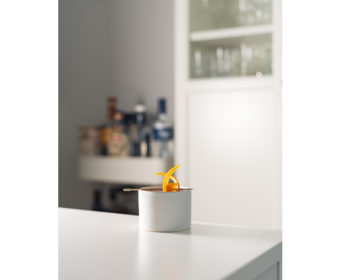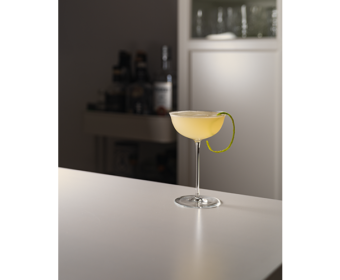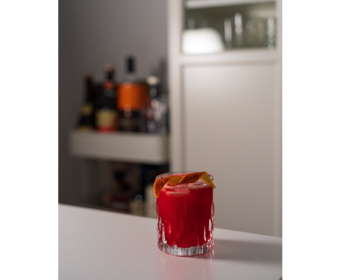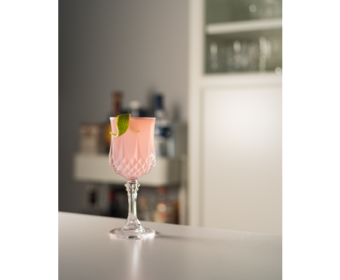Distillery Visit – Reisetbauer Qualitaetsbrand
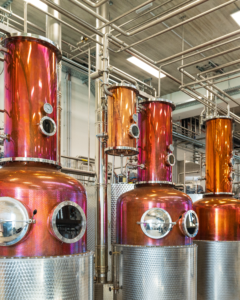
I always love to combine my travels with distillery visits. This time on our way to Vienna, we visited one of my favourite eau de vie distilleries – Reisetbauer. To make things short, the Reisetbauer distillery is well worth a visit!

When we arrived, Hans welcomed us and we first took a trip through the orchards in and around Axberg. Reisetbauer grow a lot of their fruits themselves and all of that on organically certified lands. Afterwards, we took a look at the brand new distillery and the facilities. Through sustainable practices and climate-friendly technology, Reisetbauer generate more energy than they consume.
Newest technology
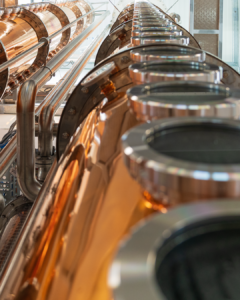
Hans Reisetbauer designed everything himself from the building itself to the distillery. On top of that, everything is designed sustainably with concrete core tempering and solar panels on every roof. One of the most important things for Hans was the automatic cleaning of each tank and still. Afterwards, we sat down in the apple and pear wood clad tasting room with a brass height-adjustable roundtable.
A comprehensive taste of the portfolio

We first started the tasting with the quince eau de vie. It is a combination of apple and pear quinces, because you need the former for the taste and the latter for the aroma. The spirit has a distinct quince flavour with hints of roses. Next, the carrot eau de vie was the first spirit I tried from Reisetbauer. I still love the clear and strong carrot flavour with slight earthy notes.
Great apple and pear spirits
Next up, we tried the barrel aged apple eau de vie. The eau de vie spends at least three years in oak barrels. This results in a beautiful combination of apple and buttery oak flavours. The tasting continued with the red Williams pear eau de vie which is a limited bottling for the ski club Arlberg. The eau de vie delivers typical Williams pear notes with just the little bit extra flavour from the red variety.
Two ‘traditional’ eau de vies
We followed that up with the raspberry eau de vie distilled from Serbian forest raspberries which Hans mentioned was an exceptional vintage. I totally agree, you can taste the fruity notes as well as some green flavours. Yet, the ‘other’ flavours were extraordinarily balanced. The rowan berry eau de vie, by the way Hans’ favourite fruit spirit, combined typical wild fruit eau de vie notes with just the right amount of bitter almond flavour.
Two ‘unconventional’ ones
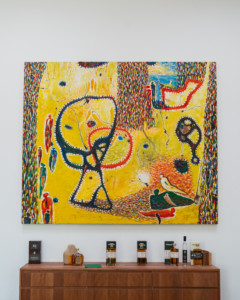
The first unconventional ‘fruit’ brandy in this selection was the ginger eau de vie. The taste was so powerful that Hans had to mellow it in an oak barrel for a short duration. You get hot ginger and earthy notes in the taste. Last but not least, we tried the barrel aged orange eau de vie, distilled from Portuguese fruits. It really tasted like Grand Marnier, but without the sweetness and a distinct oak spice note.
Barrel aged gin and old whisky
Yet, the tasting was not over, we continued with the barrel aged Blue Gin. The gin spends seven years in a large oak barrel before bottling at an ABV of 51 %. Contrary to other barrel aged gins, there was a perfect balance between mellow oak flavours and juniper notes. Additionally, we had the chance to try the oldest whisky in Hans’ portfolio. The 21-year-old Single Malt was aged in a ‘Trockenbeerenauslese’ barrel from Alois Kracher. You instantly taste the combination of sweet wine notes with a clean malt notes and some additional fruitness.
The last round
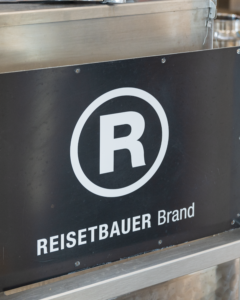
The last two spirits we tasted were the X.O. Weinbrand and the 4×7 X.O. rum. Hans distilled the brandy from Bernhard Ott’s 1000 Rosen wine and aged it for sixteen years in a barrel. The finished product tasted like very fine cognac, but without any ‘artifical’ sweetness. Instead, the spirit was very smooth with a lot of vanilla and fruity notes. Lastly, the 4×7 rum delivered a combination of Rhum flavours with noticeable fruit esters. The sweetness from the Dosage of 6 g was noticeable, but did only support it going down smoother.
Even more to try
Really the last thing we tried at Reisetbauer was their soy sauce. Together with Roland Trettl, Hans grows the soy beans on his fields. Next, the steamed beans are mixed with wheat and rye malt before fermentation. Afterwards, brine from Bad Ischl is added to the soy mash and the mix is aged in large oak vats. In the end, Reisetbauer carefully presses the mix and bottles the sauce. The organic soy sauce really tasted exceptionally, way more delicate than the normal one from the supermarket.
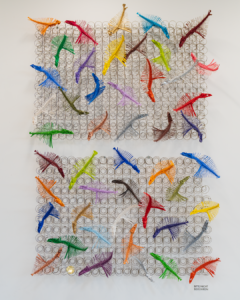
*The fact that I received a product reviewed in this article for free, did not – in any way – influence the rating of said product. We were invited by Reisetbauer to tour there distillery.

